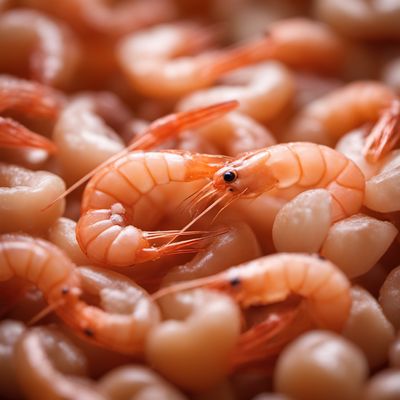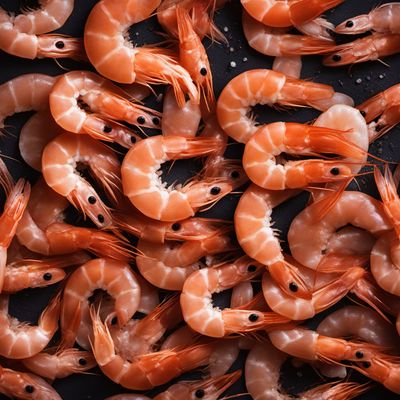
Ingredient
Prawn, northern
Northern Delicacy
Northern prawns, also known as cold-water prawns, are characterized by their firm yet tender texture, delicate sweetness, and pale pink color. They possess a mild flavor that pairs well with various seasonings and ingredients, making them a versatile choice for both simple and elaborate recipes.
Origins and history
Northern prawns are predominantly found in the cold waters of the North Atlantic and North Pacific oceans. They have been a staple in the culinary traditions of Northern Europe, Scandinavia, and North America for centuries, with their abundance and accessibility making them a popular choice for seafood lovers.
Nutritional information
Northern prawns are low in calories and fat, making them a healthy addition to meals. They are also a good source of protein, vitamins, and minerals, including selenium and iodine.
Allergens
May contain allergens such as shellfish. Individuals with shellfish allergies should avoid consuming northern prawns.
How to select
When selecting northern prawns, look for ones that are firm, translucent, and have a fresh, slightly sweet aroma. Avoid prawns with a slimy texture or strong ammonia smell, as these are signs of spoilage.
Storage recommendations
To maintain the freshness of northern prawns, store them in the refrigerator at temperatures below 40°F (4°C). Keep them in a sealed container or wrapped tightly in plastic wrap to prevent moisture loss and cross-contamination.
How to produce
Northern prawns are typically harvested from the wild, but they can also be sustainably farmed. However, producing them on a small scale may not be feasible for amateur enthusiasts due to the specialized equipment and controlled environments required.
Preparation tips
Northern prawns can be prepared in various ways, including boiling, grilling, sautéing, or incorporating them into soups, stews, salads, or pasta dishes. They cook quickly and should be monitored closely to avoid overcooking, as they can become rubbery.
Substitutions
Northern prawns can be substituted with other types of prawns or shrimp, such as tiger prawns or Gulf shrimp, which offer a similar texture and flavor profile.
Culinary uses
Northern prawns are widely used in dishes such as prawn cocktails, pasta dishes, stir-fries, and seafood salads. They are also enjoyed on their own as a chilled appetizer or in sandwiches and wraps.
Availability
Northern prawns are commonly available in Northern European countries, Canada, and the United States, particularly in regions with access to cold-water seafood.


